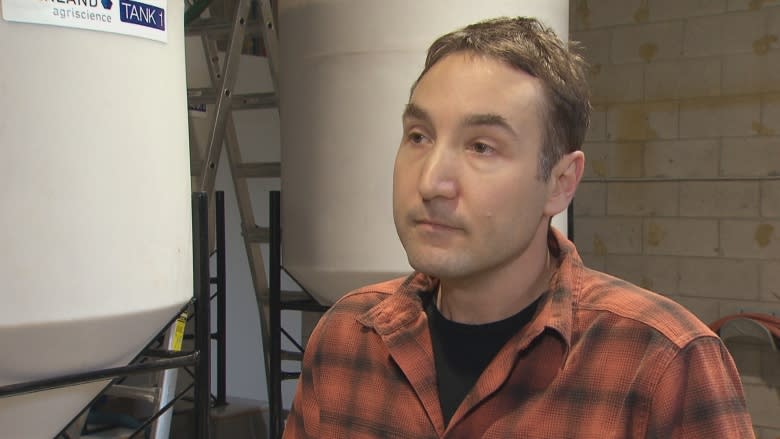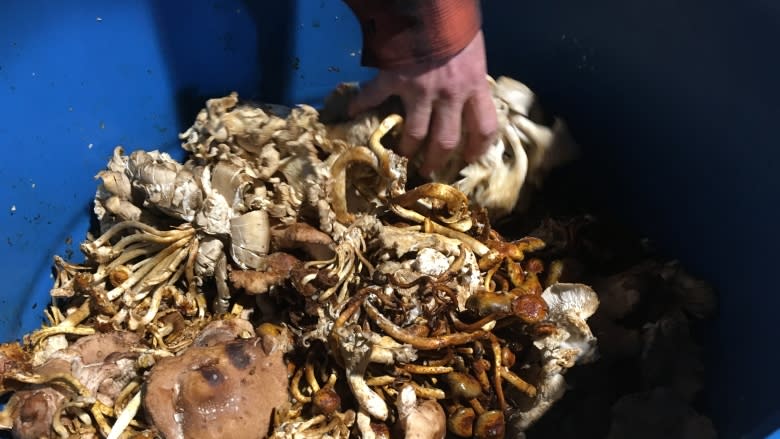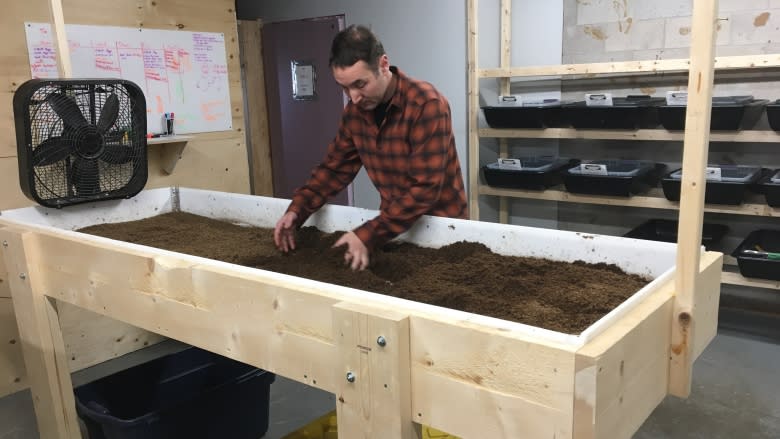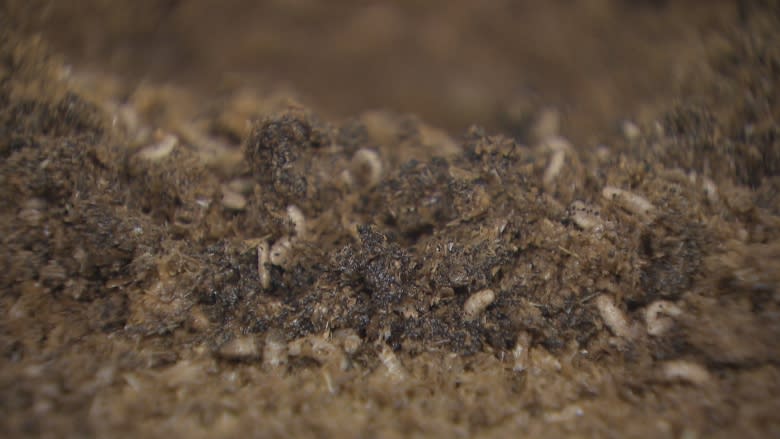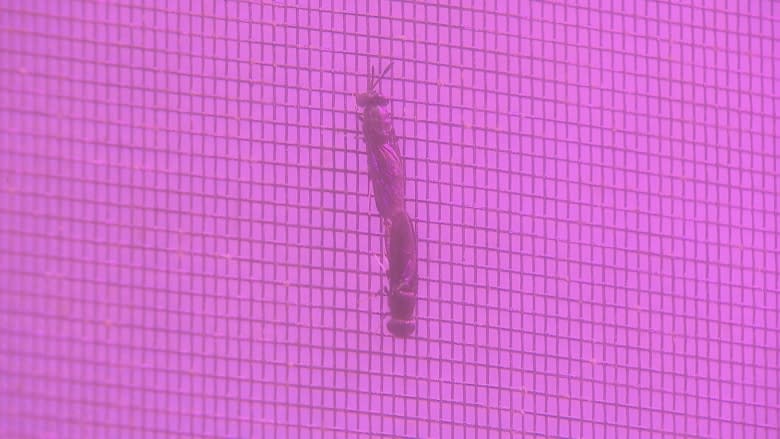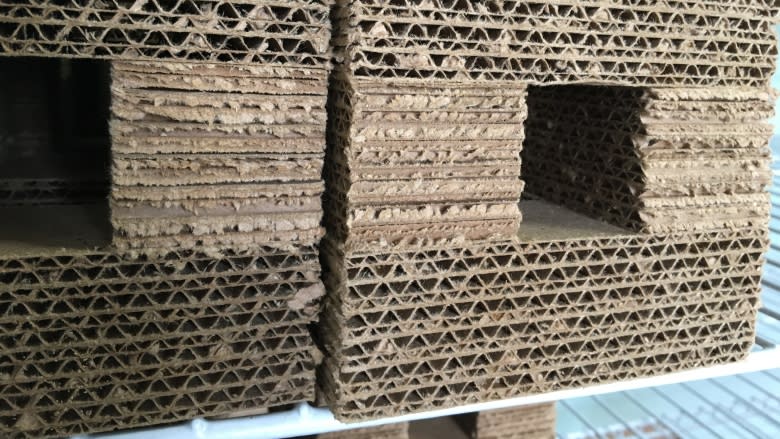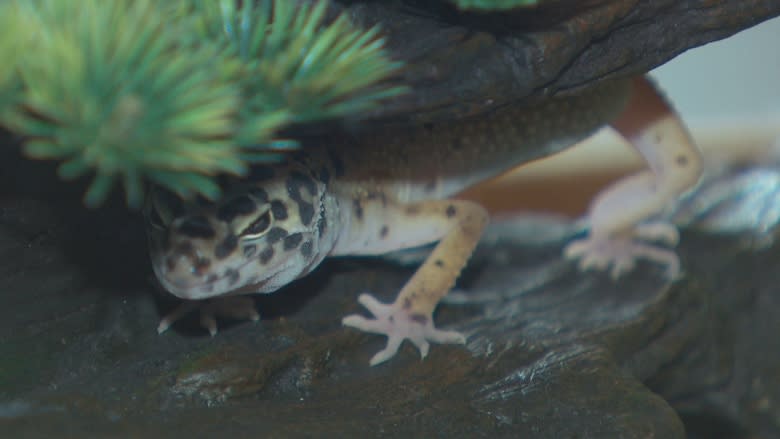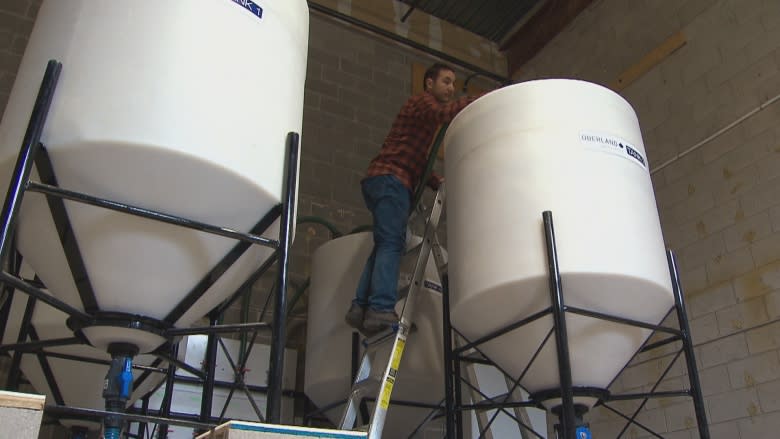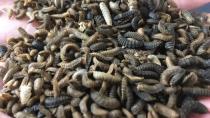How to turn compost into food — through maggots
A mass of writhing maggots swarms in Greg Wanger's open hands.
Their little bodies curl and stretch, twisting as they fall from his fingertips into a bed of sawdust.
For Wanger, the maggots — or grubs, as he prefers to call them — are an important part of the food chain.
The CEO and president of Oberland Agriscience rears about 100,000 of the black soldier fly larvae every day at the company's facility in Halifax.
"I never thought I'd be a bug farmer," he said.
Someday, the creatures, which eat insect food made from organic waste, could become your pet's lunch — or even yours.
Right now, Oberland sells live larvae as food for pet lizards, snakes, frogs and spiders. The company is going through a Canadian Food Inspection Agency certification process to become a feed mill for large-scale aquaculture and poultry operations, and Wanger hopes to expand to more traditional pet foods such as dog and cat food.
From compost to insect food
At the warehouse in the Ragged Lake Business Park, plastic barrels are filled with organic waste that's waiting to be turned into insect food.
Today, there's a barrel of mushrooms ready to be processed, but on other days, the barrels could be filled with brewery waste or coffee grounds from a local coffee shop.
Wanger won't say how the organic matter is converted into insect food, as that's "proprietary information." But he said black soldier flies are picky eaters — they won't eat rotten or live food.
Eventually, the company aims to accept waste from municipal green bins.
One square metre of black soldier fly larvae can devour 15 kilograms of waste per day, according to Oberland's website.
That's part of the reason the project has received $75,000 from Divert Nova Scotia, a not-for-profit that champions waste reduction and recycling.
"What's also interesting with this facility [is] how it's almost virtually a closed loop," said Jeff MacCallum, CEO of Divert Nova Scotia. "Pretty much everything they take in there, they use. It's almost a zero-waste facility."
Wanger said his company treats waste as a resource.
"This is actually our feedstock and it is not a waste. This is actually a very useful and almost necessary part of the puzzle."
Cycle of life
In another room, a glass tank is bathed in pink light — "love light," said Wanger — that encourages adult flies to mate. The few houseplants inside are partly for decoration and partly so the flies can drink the dew that forms on the leaves in the humid air.
The fly eggs are deposited in corrugated cardboard, like honeycombs, and when they hatch, the larvae crawl out and fall into a tub, where they're collected and transferred to large tables. That's where they'll grow from a barely visible speck to about two centimetres.
Only about one to five per cent of the larvae at Oberland are diverted from their fate and allowed to pupate and grow into adult flies to maintain the supply of eggs.
Popular with lizard, chickens
The operation is one that Obie, the company's resident lizard, would likely love to get a closer look at. The leopard gecko eats up to 10 larvae per day.
"Since we've had Obie, Obie has lived on a 100 per cent black soldier fly diet and seems happy six months later."
Oberland's product has also been tested on chickens belonging to one of Wanger's friends.
"Her chickens love them," he said. "She actually said to us that if her chickens had a choice, they would eat nothing but."
Protein source
By weight, the larvae are about 50 per cent protein. Compared with more traditional feed, they're an efficient crop.
Wanger said Oberland can produce up to a million times more protein per hectare than a conventional soyfield or cornfield. Plus, larvae grow much faster — up to 4,000 times their size in just seven days.
"I think this is really a game changer," he said.
Most aquaculture operations get the protein for their fish from anchovies and sardines harvested in the ocean off Peru and Chile, but it doesn't have to be that way, Wanger said.
"Our goal really is to close the food loop and get the protein and keep the protein in Nova Scotia," he said. "Our green waste that we're feeding our insects is all local. The insects are grown here, which is local.
"And I really hope … that the salmon locally in Nova Scotia will consume our product. Thus the salmon here truly will be local salmon."
Food for humans?
Will Oberland's products eventually make their way to your dinner plate?
It's conceivable, Wanger said.
"The live human market for insects is growing rapidly.… I commend those in Canada who have taken the plunge and have put these into markets, and we are more than happy to look at that in the future. Right now our hands are full with feeding Obie and eventually Nova Scotia fish and poultry."


